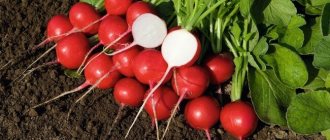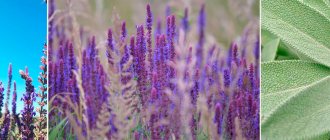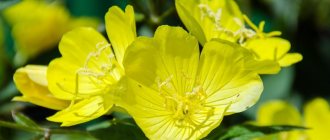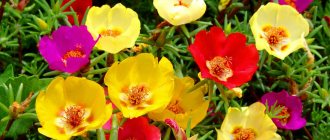To grow pumpkin, a gardener does not need special knowledge and experience; the plant is very unpretentious and not capricious. However, in order to get a good harvest, you need to highlight successful sowing and planting periods not only by region, but also by the lunar calendar. For summer residents from cool regions, the seedling method of growing helps to obtain fully ripened fruits by autumn, and for southerners and residents of regions with a temperate climate - an earlier harvest. When to plant pumpkin seedlings in 2021 according to the lunar calendar, depending on the climate zone and plant species.
Favorable days in 2021 for planting pumpkins
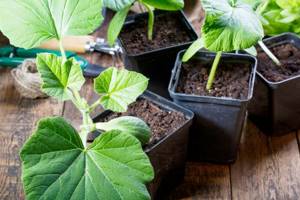
Pumpkin is an unpretentious melon crop from the family of the same name. It is cultivated in various climatic conditions. The vegetable is very heat- and light-loving. This is the main reason why it does not have time to ripen everywhere. This especially applies to regions with long springs and short summers - in areas such as Leningrad, Novgorod, Novosibirsk. To obtain a guaranteed harvest, the vegetable is grown here using the seedling method.
However, in order to plant strong pumpkin seedlings in the beds, it is important to choose the right sowing time. The optimal timing is influenced by many factors. Among them are the following:
- climatic and soil characteristics of the cultivation area;
- long-term weather forecast;
- Moon phase;
- characteristics of the variety (times of fruit ripening).
Depending on the growing region
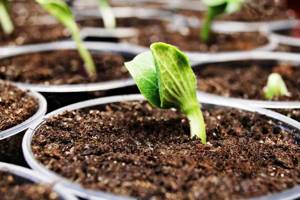
The seedling method of cultivating heat-loving pumpkin is widespread in areas with harsh climates - in the Urals and Siberia. In the middle zone, including the Moscow region, vegetables are grown using this method due to the risk of crop shortage: during rainy periods, the pumpkin may not have time to reach biological ripeness. Optimal periods for different regions:
- in the southern regions - the first ten days of April;
- middle zone - second half of the month;
- northern regions - late spring.
In addition to the agroclimatic characteristics of the area where vegetables are grown, the weather is taken into account - temperature conditions, amount of precipitation. In early spring, if it is predicted that at the end of May the soil will warm up to the required values suitable for planting seedlings in open (unprotected) ground, the seeds are sown in the first half of April. It is taken into account that at the time of transplantation, the age of the seedlings should be 25-30 days, and the emergence of seedlings after sowing occurs on the 5th day with preliminary germination. The latter takes another 4 days. All this needs to be summed up.
Effect of variety

Determining the timing of planting seeds on seedlings is influenced by varietal characteristics. For example, late-ripening representatives of a vegetable crop may simply not ripen due to early autumn frosts, which the pumpkin cannot tolerate. To collect ripe fruits from such varieties, you need to start sowing seeds in the first half of spring.
Table. Growing seasons
| Classification of varieties | Ripening time, days |
| Early | 100 |
| Mid-season | 105-120 |
| Late | up to 160 |
The choice of variety depends on the purpose of cultivation. If pumpkin is grown for long-term storage, then mid- and late-ripening representatives of the crop will be suitable.
Table of pumpkin planting days according to the Moon
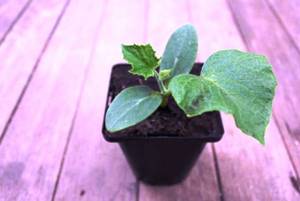
Having identified the main periods when it is necessary to start sowing so that the seedlings do not overgrow and die from return frosts, vegetable growers still determine the exact days. The waxing Moon phase is the most favorable for plant development. At this time, the metabolic process accelerates, and active growth of crops is noted. But the periods of the new moon and full moon are inappropriate times for sowing work.
Favorable and forbidden days
| Month | Suitable numbers | Bad days |
| March | 3, 5, 8, 13-22, 24-28 | 17, 20-22 |
| April | 3, 5, 8, 9, 13, 15-22, 24-28 | from 9 to 11, 13 and 28 |
| May | 2, 5-7, 12-17, 19-22, 24-26, 28 and 29 | 5-7, 12, 27 |
| June | 2, 3, 6-8, 15-26, 29, 30 | 3-5, 11, 26 |
Factors influencing the choice of planting method
To plant pumpkins, one of the following methods is traditionally chosen:
- wide-row;
- nesting
In this case, an average of 1 to 4 m² is allocated for each plant.
Accordingly, when cultivating bush pumpkins with early ripening, much less area will be needed than for medium-climbing and long-climbing late-ripening varieties. In addition, when growing pumpkin in arid regions, when planting it, it is recommended to increase the distance between plants and, on the contrary, in regions with sufficient water supply, pumpkins can be planted closer to each other.
Attention! The choice of feeding area is influenced by the soil composition and climatic conditions, as well as the biological characteristics inherent in each pumpkin variety, namely its shape - long-vine or bush.
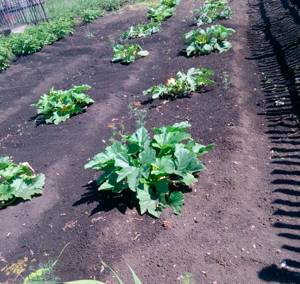
The square-cluster method of planting pumpkins involves digging holes in the corners of squares of a certain size and planting seeds in nests - that is, several pieces in one hole. This method is good because the resulting shoots are more uniform.
The wide-row method involves sowing pumpkin seeds in a line at a certain distance, directed from south to north. Compliance with this condition allows you to provide growing plants with all the conditions for intensive photosynthesis.
Basic landing rules
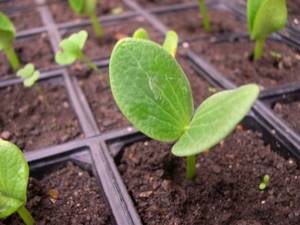
It is possible to grow a good harvest only if the seeds are planted correctly and after proper care. The quality of the seeds also plays an important role. All damaged, darkened, very small seeds should be discarded in advance. It is also worth remembering that you can collect seeds yourself only from pumpkin varieties. To grow a hybrid, you need to buy planting material. Such seeds can only be obtained by using the latest breeding technologies.
Soil and seed preparation
The soil should be spread out into separate cups or placed in the cells of seedling cassettes. The soil needs to be watered. It is better to prepare seeds for planting in advance. To do this, they are laid out on a damp napkin or cloth for 5-6 days. The fabric needs to be moistened periodically. Germinated seeds germinate much faster. This event is also necessary in order to reject low-quality planting material. If after 5-6 days the seed has not sprouted, you can safely throw it away.
Scheme for sowing pumpkin seedlings
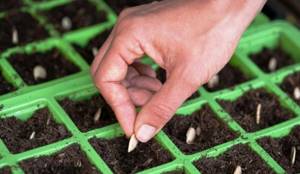
Seeds are planted in separate cups or cells. Sowing into a common container followed by picking is not permissible. Pumpkin does not tolerate transplantation well. In addition, the period for growing seedlings is only 25-30 days. Large containers are not required for this. Cups or cassettes with sides 5-6 cm long are suitable.
You can plant seeds in a common container, but in this case you need to maintain a minimum distance between them—10 cm. It is better to put cardboard dividers and place information on the varieties on them.
It is more convenient to grow seedlings in peat cups or cassettes. Subsequently, you can simply transplant the plants into the ground along with the glass. In this case, the root system will not be injured, which will have a beneficial effect on subsequent growth.
Conditions for growing seedlings and care features
Pumpkin should be grown in a warm, well-lit place. A window sill is well suited for these purposes. The optimal temperature for the first two weeks after planting the seeds is 20-25°C. Subsequently, it is better to reduce the temperature to 18-20°C to prevent the seedlings from stretching.
Moderate watering is needed. The soil should not dry out, but excess moisture also harms plants. 2-3 weeks after planting, the seedlings should be fed. You can use nitrophoska (5 g per 5 liters of water) or mullein infusion (pre-dilute it in water in a ratio of 1:10).
2-3 days before transplanting, you can spray the seedlings with Epin solution. This drug increases the protective forces of plants. After this feeding, the pumpkins take root better.
Problems with growing pumpkin seedlings
Planting pumpkin seedlings has two problems that you need to know about in advance. The first is to stretch out the sprouts, and the second is to develop the black leg.
Pull
Pulling of seedlings occurs mainly for two reasons. Primarily due to insufficient watering of the soil in which they are planted. The second reason lies in insufficient or, conversely, excessive illumination of the seedlings.

Pulling pumpkin seedlings
Blackleg
The appearance of blackleg in seedlings lies in the presence of pathogenic fungi or bacteria in the soil. Blackleg is rotting of the stem, starting at the root of its neck.
The appearance of this disease can be influenced by soil infestation with fungus, frequent watering, irregular ventilation, temperature changes, undisinfected containers, increased soil acidity, and affected seeds. This disease can leave a gardener without a harvest in a short time.
To prevent the development of root rot, in addition to following the rules of caring for seedlings and soil, you need to use fungicidal substances. If the fruits have already appeared, then limit yourself to biological products and folk remedies.
To get a rich pumpkin harvest, it is important to properly care for the seedlings. Create all the conditions for comfortable growth and protect her from illness.
Planting seedlings in a permanent place and care
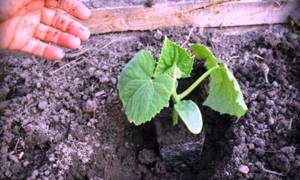
Planting seedlings in open ground or a greenhouse, if they are not in peat or paper cups, can only be done by transshipment (together with a lump of earth). Water the soil generously, lightly press down the sides of the cups, hold the seedling and soil with one hand, turn the container over and remove it. The distance between the bushes should be at least a meter, row spacing should be 150 cm, the approximate depth of the hole should be 25–30 cm. After replanting, the soil is compacted a little, watered, and the bushes are mulched with peat or dry grass.
If, after moving the seedlings into the ground, the weather suddenly deteriorates, a temporary shelter (polyethylene on pegs or arcs) is built over the beds.
Immediately after planting, if there is no natural precipitation, the pumpkin is watered almost every day, but not abundantly, so as not to provoke rotting of the roots. As soon as the bushes take root and sprout new leaves, the frequency of watering is reduced to 1 or 2 times a week. After the fruits appear and begin to gain weight, pour a bucket of water under one bush. After each rain or watering, the soil between the rows is loosened. Weeds are removed as often as possible; pests settle in them. They work carefully with the hoe, trying not to damage even the smallest roots.
The first fertilizing is carried out 15 days after planting, subsequent ones every 10–20 days, depending on the fertility of the soil. Use rotted manure or mullein, any of the ingredients are diluted with water in a ratio of 1:4. The solution is poured, retreating 40 cm from the root, so as not to burn it. You can take mineral complexes, but only without nitrogen in the composition. It is impossible to overfeed the plants; if the greenery becomes massive and the fruits develop poorly, fertilizing sessions are stopped.
Most varieties of pumpkin require shaping the bush; as soon as 2-4 fruits are formed on the main stem, the tip is pinched. The same procedure is carried out with each new lash. The cut areas are powdered with wood ash and lightly sprinkled with earth, the tissues will tighten, new roots will form at the tips, which will provide the fruits with additional nutrition. Even if the rules of agricultural technology are followed, pumpkins are susceptible to diseases and pests. The bushes are constantly inspected, and if any problems are detected, measures (treatments, removal of diseased plants) are taken immediately.
Finally, we’ll give you a few more tips. Start hardening pumpkin seedlings 2 weeks before transplanting, take them out to the loggia or open a window in the room, first for a couple of minutes, gradually increase the time. When planting, feel free to discard weak seedlings; they are unlikely to show good results. Make your calculations carefully, choose only favorable days for all work with the plant, and spare no time and effort. A pumpkin, planted at the right time and surrounded by the care of the gardener, will certainly reward you with a good harvest of sweet, fragrant and shelf-stable fruits.
Pests or diseases
Pumpkin can develop fungal diseases such as black mold, powdery mildew, rot, ascochyta blight and anthracnose.
Black mold appears as yellow-brown spots between the veins of the leaves, which become covered with a dark coating of fungal spores as the disease progresses. After the stains dry, holes form in their place. Young pumpkins shrivel and stop developing.
With ascochyta blight, large yellow-brown spots first form on the leaves, stems and shoot nodes, then light spots with a chlorotic edge, covered with black pycnidia containing the body of the pathogenic fungus. The pumpkin dries out and dies.
Powdery mildew is a real scourge of gardens and vegetable gardens, the symptoms of which look like a thick whitish coating, similar to spilled flour, which contains fungal spores. Leaves affected by powdery mildew dry out, fruits become deformed and stop developing. This disease is most active under conditions of sharp fluctuations in air humidity and temperature.
Anthracnose appears as large watery yellowish spots on the leaves. In wet weather, the veins of the leaves are covered with a pink coating. Gradually, pink spots spread over the leaves, petioles, stems and fruits, and by autumn the affected areas turn black. Anthracnose is most dangerous at high humidity.
White rot develops on all parts of the plant, causing damage to the root system, drying out of fruiting stems and reduced yield. The pumpkin turns yellow, turns brown, and becomes covered with a flaky coating of mold. Slime may appear on the stems. Gray rot appears as brown, blurry spots that quickly merge with each other and affect the entire plant. Wet bacterial rot can appear as a result of damage by slugs or podras to ovaries and young fruits in too dense plantings.
Among the insects, pumpkin is attacked by melon aphids, podura, or white springtails, wireworms and slugs.

Slugs eat the leaves of plants, sometimes leaving only a network of veins. There are especially many of them in the rainy seasons. In addition, they are able to live and harm plants for several years.
- Everything you need to know about growing cucumber seedlings
Melon aphids damage shoots, flowers, ovaries and the underside of leaves, causing them to curl and wrinkle.
Podurs are tiny white insects with a cylindrical body up to 2 mm long, feeding on seeds and underground parts of plants. Podura cause the greatest harm to plants in cold, damp weather.
Wireworms are the larvae of click beetles that gnaw at the root collar of young seedlings, which leads to the death of plants. Most of all, wireworms like to accumulate in damp lowlands.
Pumpkin processing
The fight against pumpkin diseases is carried out factually and preventively, which is undoubtedly preferable, since the disease is much easier to prevent than to cure. To protect pumpkin melon from fungal diseases, you need to observe crop rotation, comply with agrotechnical requirements, and take a responsible approach to each type of work, and especially to pre-sowing seed treatment. At the first signs of disease, spray the plants and area with one percent Bordeaux mixture or another fungicide. And try to make spring and autumn treatment of melons with Fitosporin mandatory - this will help you avoid many unpleasant surprises.
You will have to collect slugs with your hands or set up beer traps for them: place bowls of beer around the area and from time to time collect mollusks that crawled to the smell of it. Wireworms are also caught with bait by digging holes 50 cm deep in different places around the area, placing root vegetables cut into pieces there - carrots or beets - and covering the holes with boards, wooden boards or roofing felt. After a while, the traps check and destroy the wireworms gathered there. They fight durs by dusting the soil around the plants with wood ash. Aphids are destroyed with Phosfamide, Karbofos or a solution of 300 g of soap in 10 liters of water.
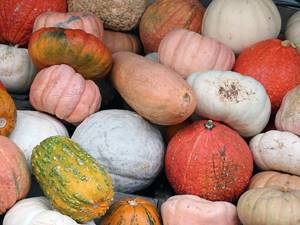
And yet, let us remind you that diseases and pests, as a rule, affect weak and unkempt plants, so observe crop rotation, fulfill agrotechnical requirements, conscientiously care for your plants, and you will not have to treat and save them.
When to plant pumpkins in open ground in 2021?
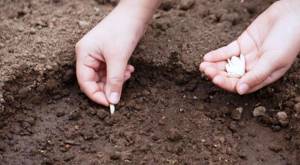
You can plant pumpkin seeds in open ground when the ground warms up enough (up to +8, or even better up to +12 degrees), and the weather is consistently warm (above +10..+12 degrees).
Of all the pumpkins (zucchini, cucumbers, melons, watermelons), pumpkin is the most cold-resistant. Therefore, even if short-term return frosts occur, the pumpkin will be able to survive, if, of course, it manages to grow the root system.
Depending on region and climate
Naturally, the timing of planting pumpkins differs depending on climatic conditions.
So, in the southern regions you can start sowing pumpkin seeds in the ground already in April, in the middle zone (Moscow region) - in the 2-3rd decade of May, and in the Urals and Siberia - in the second half to the end of May (3rd decade).
According to the lunar calendar in 2021
To select a specific day for sowing, many summer residents resort to the lunar sowing calendar, planting seeds in accordance with certain phases of the moon. Try it too!
So, in 2021, favorable days for sowing pumpkins in open ground, according to the lunar calendar, are:
- in April - 9, 10, 15-17;
- in May - 6-8, 13-17;
- in June - 4-6.
Unfavorable dates (Full Moon and New Moon , as well as the period when the Moon is in Aquarius, because it is a barren and dry sign - in italics), when you should definitely not plant a pumpkin in open ground, in 2021 are:
- in April - 5-6, 12, 27;
- in May - 2-4, 11, 26, 30-31;
- in June - 10, 24, 26-27.
What kind of soil is needed for planting pumpkins?
Pumpkin grows well on structurally fertile, light dark-colored sandy loam soils. In areas well fertilized with manure, the fruits reach enormous sizes.
The basic tillage of soil for pumpkin is no different from tillage of soil for vegetable crops: in the fall, the bed is dug up with fertilizers using a shovel, and in the spring it is leveled with a rake. The soil for this vegetable should have an acidity close to neutral, the optimal pH being 6.5. You should not plant pumpkins where any pumpkin crops (cucumbers, zucchini, squash) grew last year.
Soil preparation
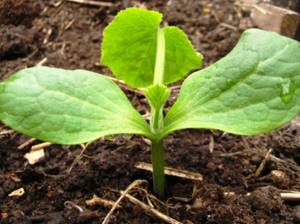
Preparatory work begins in the fall, so think about the place for the pumpkin in advance. What needs to be done: clear the area of weeds and crops that grew this year and prepare organic fertilizer. To do this, mix 60 grams of superphosphate, 30 grams of potassium chloride, 10 kg of humus (14 kg of manure can be used instead). This amount should be enough for 2 square meters. m. Fertilizer is applied in the cold for plowing.
To ensure looseness, coarse sand or peat can be added along with organic matter. In very slightly acidic soils, it is advisable to add wood ash. In spring, digging is not required, but it is necessary to remove weeds and level the top layer of soil with a rake.
Preliminary site preparation
You should start preparing the site in advance (in the fall). Fertilizers should be added during deep digging (to a depth of at least a spade bayonet).
- For 1 m² you will need 2 buckets of humus, 1 liter jar of wood ash, 200 g of superphosphate and 100 g of potassium chloride; the last two ingredients can be replaced with 1 glass of nitrophoska.
- In the spring, immediately before planting, the area is leveled with a rake, having previously scattered ammonium nitrate in the amount recommended by the manufacturer.
- Spray the ridges with hot water (temperature 80 °C) to disinfect them from possible diseases.
Selection and preparation of seeds for planting
Growing the crop begins with preparing pumpkin seeds for planting. In order for only healthy and strong plants to grow from them, you need to take only the best from the available fresh (1-4 years) planting material: large, full-bodied specimens with healthy skin, without damage or spots of rot or mold. Selecting full-fledged seeds is simple - you need to pour them into a container with salted water and wait until some of them float (it’s better not to use them, nothing good will grow from them). Empty seeds need to be removed, drained of water, and those remaining should be used for planting.

Then it is recommended to disinfect the selected specimens, germinate the seeds and harden them. First they are omitted (optional):
- for 30 minutes in a 1% solution of potassium permanganate;
- for 5 minutes in a 3% formaldehyde solution;
- for a day in a solution of potassium humate (0.5 g per 1 liter of water).
Before soaking in such solutions, you can warm the seeds in the sun for a week (they need to be stirred once a day.
After pickling, they are soaked in warm (50°C) water for 2-3 hours, wrapped in a damp cloth and left in a warm place for germination. Sprouts appear around the 3rd day.
Soaking pumpkin seeds before planting speeds up their germination, allows you to get friendly shoots, which is very important for the further development of plants, and also to some extent protects against pests that eat such seeds worse, since their taste changes.
When they begin to sprout, the seeds need to be hardened: placed in a damp cloth in a household refrigerator in the vegetable compartment for 3-4 days. Or you can germinate the seeds by combining the procedure with hardening: keep them for 10 hours at 18-20°C, then 2-3 hours at 1-2°C, then again in a warm place, etc.
Hardening off pumpkin seeds for planting is not necessary for vegetables grown in southern regions; for those that will grow in colder climates, it is recommended.
Harvest and storage
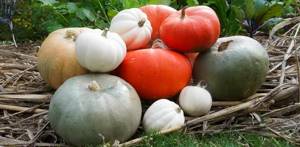
How to harvest and store pumpkin photo
In order for pumpkins to be stored well and for a long time, the ripe fruits must be cut off along with the stalk (5-6 cm long). Store in a dry place, at room temperature, but at a temperature range of 5-8 °C the fruits will last until spring.
Rules and schemes for planting pumpkin seeds in open ground
Plant pumpkin seeds in open ground according to a certain pattern. This is a large plant, so it needs a large area for nutrition. The planting pattern depends on the variety. Bush pumpkin is planted at the same distance of 70 cm in rows and row spacing, medium-stem varieties - 70 cm in a row and 1.5 m in row spacing. For pumpkin of long-stem varieties, a distance of 1 m should be left in the row between adjacent specimens, and 1.5-2 m between rows.
The depth of seed placement also matters. They are lowered into the ground 7-8 cm. Up to 3 pieces can be placed in each hole, and after shoots appear, leave 1 most developed plant and pinch the rest. Sprinkle the holes on top with a thin layer (no more than 2 cm) of humus or peat, and cover them with a light film before germination for faster germination and protection from possible spring frosts.
Along with pumpkin, you can plant corn in regular beds, and beans next to them. It is undesirable to place other pumpkin crops - zucchini, cucumbers and squash - close to pumpkins; they can become pollinated, causing the taste of their fruits to become worse.

In the northern regions, pumpkin seeds can be planted in open ground in high beds. They can be built as follows: dig a trench to the planned length and width of the beds and to a depth of 30 cm. Place plant debris at the bottom: small tree branches, leaves, sawdust, plant tops, in general, everything that can rot and give heat. Add a compost layer and a layer of soil on top. The height of such beds is at least 30 cm from the ground surface. To prevent the embankment from crumbling, you need to make fences from long pieces of slate or boards of appropriate height.
It is also popular among some gardeners to grow this crop on compost heaps, on which the plants grow well and bear fruit. The benefit is double - the pumpkin is provided with nutrients, and it itself accelerates the decomposition of plant material inside the heap, and its leaves do not allow it to dry out and prevent the growth of weeds on the heap.
Where to plant seedlings
When planting seedlings, novice gardeners have many questions: choose shade or sun, what should be the temperature for planting, what should be the distance between the sprouts, etc.
Planting cabbage seedlings in open ground
Since pumpkin is a very heat-loving vegetable, it is best to plant it in places that will be well lit by the sun. But it’s still better to land in the evening, when the sun has already gone down. Alternatively, you can choose a cloudy day. With this timing, the seedlings adapt faster.
The optimal time for planting is the end of spring, when the temperature during the day is about +20 degrees Celsius, and at night does not drop below +15 degrees.
Attention! The holes for planting need to be made deep enough - up to 10 cm, because pumpkin plants have a fairly long root.
At what distance to plant a pumpkin is a question that concerns many summer residents. It’s no secret that this is a plant that loves space. Each bush should have at least 1.5 m². The distance between seedlings will depend on the type of plant: for seedlings of bush pumpkin crops, a distance of 55 cm is needed, for weakly climbing varieties - 85 cm, and for strongly climbing varieties - from 100 cm.
Caring for pumpkins in open ground
Many gardeners believe that pumpkin plants do not require special care. Therefore, the only thing they do after planting is to occasionally water it with water. However, to achieve maximum yield and high quality fruits (size, aroma, taste), it is important to follow certain agrotechnical rules and pay attention to this crop.
Watering
Irrigation should be done on a regular basis, as pumpkins love moisture. Despite the fact that the root system is quite powerful and extends laterally and deeply over a considerable distance, the surface roots still need to be watered.
In addition, the roots pump out moisture from the soil layers, which evaporates through the foliage, so there is practically no liquid left in the root system and stems.
Irrigation rules:
- Before and after emergence, up to the formation of the bush, it is necessary to water in small portions, but daily. The golden rule is that the volume of water increases gradually.
- The largest amount of liquid is added during mass flowering and fruit formation.
- The amount and frequency of water applied is determined by the specific pumpkin variety.
- You should not water the plant a few days before the fruit is fully ripened.
- The temperature of the liquid should not be lower than +19-21 degrees. Cold water is completely excluded, as the culture will die.
- After irrigation, it is advisable to loosen at the very base of the main stem.
Mulching
This process is used by gardeners who do not have the opportunity to water their garden frequently (they rarely come to their dacha, there is no required amount of water, etc.). Mulching makes it possible to maintain the desired level of moisture in the soil for a long time.
How it is done: a special mulch is placed around the stem, thanks to which weeds do not additionally grow. The following materials are used as mulch (necessarily of natural origin, so that the soil “breathes” air):
- sawdust;
- needles from pine, spruce, fir, thuja and other coniferous trees;
- peat;
- tops from other crops that have already been collected;
- weeds;
- small tree branches (mixed with grass);
- foliage.
Loosening
Since the root system is quite developed, an increased amount of oxygen is needed. For this purpose, the loosening method is used, which is performed after watering or a day after irrigation. When loosening, weeds are simultaneously pulled through.
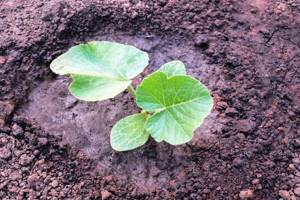
Pollination
If pumpkin plants are not pollinated, the risk of ovary rot increases. Pollination is usually carried out by insects, but there are not enough of them everywhere, so artificial pollination is used. What do we have to do:
- pick a male flower;
- pluck the petals with gentle movements (so as not to knock off the pollen);
- touch the pistils (anthers) to the female inflorescence.
The time for the procedure is before lunch. If it is not possible to carry out manual pollination using the method described above, use simple advice: prepare honey water and spray the plants (female flowers).
Bush formation
The bush is formed without fail, as this makes it possible to get a better harvest. For this, 3 main methods are used:
- Method No. 1. It is necessary to leave only the main stem on which fruits grow in quantities of 2 to 3 pieces.
- Method No. 2. The main and one side stem remain. The quantity on each shoot is 2 pumpkins.
- Method No. 3. There are two shoots, one main stem. On each of them there remains mainly one fruit.
It is important to pinch the point of further growth of the stems. To do this, after the fruit ovaries, you need to count 5 leaves. This is the point.
Top dressing
Pumpkin crops require organic and mineral fertilizers, which increases productivity and prevents the development of diseases. The need for feeding is due to the fact that the plant has too large fruits, and therefore requires a large amount of useful nutrients.
Fertilizer application times:
- The first time fertilizing is carried out after the formation of five leaves;
- the second time - when lashes form;
- the third and subsequent times - every 14-15 days.
What can you feed:
- solution of slurry and water (ratio 1:10), initial consumption for 6 plants - 10 liters of liquid, further consumption for the same number of plants - 2 buckets;
- nitrophoska (the first time 10 grams of the product is used per plant, then another 5 grams are added to this dose);
- wood ash must be added (1 cup per bush);
- mullein solution, minerals (phosphorus, potassium, etc.), industrial fertilizers of simple, complex and mixed types.
Sprinkling of lashes
If you do not apply powder, the leaves, ovaries and lashes will break off under the negative influence of precipitation, wind, and mechanical action. It is especially worth noting another advantage of the method - when the vines are covered with soil, an additional root system develops, which draws moisture and nutrients from the soil, which contributes to the plant’s nutrition.
How to sprinkle:
- powdering time – the lashes reach one meter;
- unravel the elements;
- spread on the ground in a given direction;
- Sprinkle each lash with soil in 2-3 places.
Save and share:
Protecting pumpkins from diseases and pests
The most common pumpkin diseases are fruit rot, powdery mildew and mosaic. Most often they appear due to increased dampness - a favorable environment for the development of bacteria and fungi. The most common pests that attack pumpkins are spider mites and melon aphids.
Powdery mildew
When the first symptoms of a fungal disease are detected on pumpkin leaves, it is combated by spraying with a solution of 3 g of potassium permanganate or 2 g of copper sulfate dissolved in 10 liters of water. Treatment is carried out with 1% Bordeaux mixture during the formation of ovaries and leaves. For prevention, regular watering is carried out, crop rotation is observed and the remains of diseased plants are destroyed.

Powdery mildew on pumpkin leaves
Pumpkin mosaic
A dangerous viral disease, infected plants are removed and burned away from the site. Preventive measures: destruction of weeds, disinfection of garden tools, destruction of parasites, timely removal of affected areas.
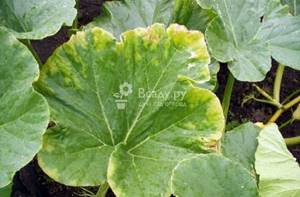
Pumpkin mosaic in the beginning stage
Fruit rot
The rotten areas are carefully removed with a knife and the wound is wiped with freshly squeezed aloe juice. The rubbing area dries out, but the pumpkin continues to develop.
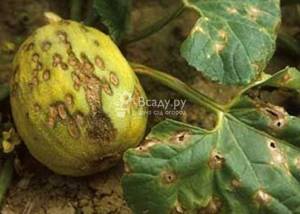
Pumpkin fruit rot
Aphids are combated by removing weeds, spraying with a soap solution (200 g of grated soap per 10 liters of water) or 10% karbofos in a proportion of 60 g per 10 liters of water.
Spraying with onion infusion of 200 g of onion peel per 10 liters of water or a 20% solution of chloroethanol (20 g per 10 liters of water) helps against spider mites.

melon aphid
Pumpkin is considered a fairly resilient crop, but if not properly cared for, it tends to suffer from various diseases and pests. Of the diseases, powdery mildew is the most dangerous. The reason for its development is poor agricultural technology and persistently damp and cool weather.
Signs of powdery mildew are the appearance of a whitish coating on the stems and surfaces of leaf blades. Gradually these areas become brown and dry out. The affected plant is stunted in growth and has poor fruit set, which ultimately grows deformed and not tasty.
- remove and destroy affected shoots and foliage outside the garden
- the remaining plant is treated with colloidal sulfur (dilute 25 g in 10 liters of water)
- sprayed with sodium phosphate (10 liters of water will require 50 g of product)
- Mullein is infused for three days and the bushes are pollinated with it (1 liter of mullein is diluted in 3 liters of water)
- white rot
- bacteriosis
- anthracnose
- peronosporosis
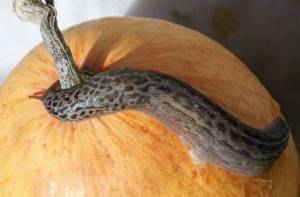
Slug on fruit
To prevent these diseases, before planting, the seeds must be treated with an ash solution and the soil with a fungicide. In the fall, be sure to remove all remaining plant debris from the garden and burn it.
- chamomile infusion
- infusions from tops of potatoes and tomatoes
- decoctions of wormwood
- solution of wood ash or lime
- tobacco powder
The plant is sprayed with liquid products, and powdered with bulk products. The procedure is carried out three times with an interval of 7 days.
